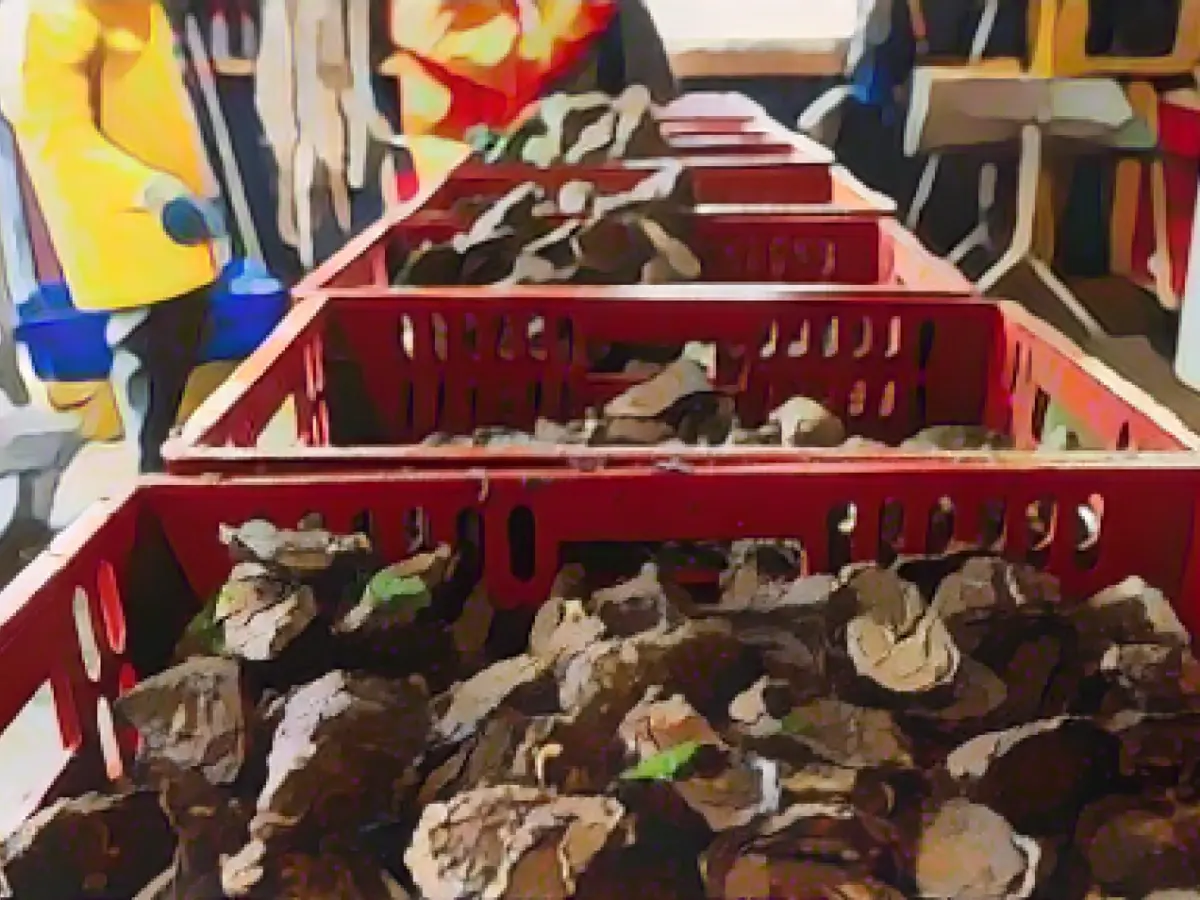Animals - Sylt oysters move into winter storage: not enough space
To protect them from the ice, a good million oysters from the mudflats off List are brought ashore for winter storage in seawater tanks. However, there is no room for another 3.5 million oysters - and now the oyster farmers are worried about the weather this winter.
The shellfish, which are bred in Germany's only oyster farm, Dittmeyer's Austern-Compagnie, are brought to the farm in List. The procedure is the same every year: in late fall and at the beginning of winter, the oysters take up residence in the tanks and return to the mudflats in March. This is to protect the "Sylt Royal" from ice drift or freezing.
In previous years, the storage capacity at the farm was sufficient for the entire population. This is now different, as operations manager Christoffer Bohlig told the German Press Agency. The reason lies in a new regulation a few years ago - imposed by environmental protection associations, according to Bohlig.
Previously, seedlings weighing around 30 to 50 grams were bought from Ireland and then grown to consumer maturity within one to two years, said Bohlig. Now the people of Sylt are only allowed to buy mini oysters that come from a closed hatchery. These are only about the size of a pinhead and weigh 0.02 grams. This is to prevent the introduction of invasive species.
The oysters that are now widespread in the Sylt Wadden Sea are the Pacific oyster (Crassostrea gigas). The "Sylt Royal" is also one of them. Overfishing, among other things, led to the disappearance of the European oyster (Ostrea edulis) from the northern Wadden Sea in the middle of the 20th century.
The new requirement is causing major problems for the company. The oysters now need around five years in the mudflats off Sylt before they are big enough to be served on plates. However, the overwintering capacities are only designed for a good million oysters. "That means I still have around 3.5 million oysters out here, which I should actually bring in somehow. But I don't know where to put them," said Bohlig.
Due to the new regulations, "gigantic quantities of oysters have been built up over the past three years so that we can even sell them in the next three to four years", explained the oyster farmer. "If it all freezes or is destroyed by the ice, things will look bad for the next few years."
Bohlig now hopes that the thaw will continue. He is currently hoping that everything will go smoothly. However, if it gets cold again in two or three weeks, new ice will form quickly and "it will be closed within a day or two. Then I can't do anything anymore".
The small oysters actually cope well with cold temperatures in winter. But: ice can be dangerous for them. The animals lie in net bags, the "poches", on iron racks in the mudflats, which are flushed by the water of the North Sea at high tide. Ice formation is a problem: "When it floats back and forth here, it's like a bulldozer and simply destroys everything," said Bohlig. This is why the oysters have to be moved indoors.
Dittmeyer's oyster company
Read also:
- Will he be convicted as Jutta's murderer after 37 years?
- He also wanted to kill his cousin
- With live stream! Gawkers film dying man
- Is Saarland threatened with economic collapse?
- Despite the concerns about winter weather, the German Press Agency reported that the German oyster farm Dittmeyer's Austern-Compagnie in List must leave around 3.5 million oysters in the mudflats due to a lack of winter storage space.
- The oyster farmers are worried about the animals' survival, as they are protected from ice drift and freezing in seawater tanks during winter, but the tanks can't accommodate the additional oysters.
- The new regulation, imposed by environmental protection associations a few years ago, prohibits the purchase of large oyster seedlings from Ireland and instead requires mini oysters from a closed hatchery. This is to prevent the introduction of invasive species.
- Christoffer Bohlig, the operations manager at Dittmeyer's oyster company, explained that these mini oysters need around five years in the mudflats off Sylt before they reach consumer maturity and can be stored in the seawater tanks over winter.
- Compounding the issue, the ice in the Wadden Sea can be dangerous for the oysters. When it floats and reforms, it can destroy the net bags containing the oysters, necessitating their relocation indoors to protect them from ice damage.
Source: www.stern.de








